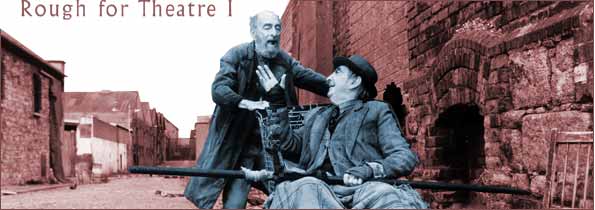The Deadly Theatre
After reading and
highlighting the important key elements of the “Empty Space” as how it’s referd
on the book that was written by the author Peter Brook, I was bale to draw out
an idea of what’s the definition of an empty space and calling it a bare stage
as how it was mentioned in the text.
Then he splinted the word into four ways and distinguished what are the
four different kinds of theatre. These types of theatre are: Deadly Theatre, a
Holy Theatre, a Rough Theatre, and the fourth one was the an Immediate Theatre.
In this chapter
Peter Brook was to deliver a powerful indictment of deadly theater for us. In
better words, he was able to identify and explain with such a detailed relevant
sequence what is deadly theatre in terms of performances that are dull and
boring, providing no transcendental experience or immediate encounter with
truth and beauty. In his book, Brook has focused on several reasons why deadly theater happens and why it persists; and while I was reading through the chapter and reviews it again during that time I were able to pull up some of
the reasons that made the author describes a period of time, place, and people
and the way how they plays were written or taken a place at and gathered all
those together and called it the Deadly theatre because of the following:
1-Deadly theatre
happens when all the stage directions are prescribed, leaving no room for
improvisation and creativity.
2-Deadly theatre is
content to be conventional and follow the rules.
3-Deadly theatre is
imitative rather than innovative.
4-Deadly theatre
approaches performance from the perspective “that somewhere, someone has found
out and defined how the play should be done.”
5-Deadly theatre
persists because it does not adapt to a changing culture and expectations.
Deadly theatre
persists because people are most concerned about what makes money (consumerism)
rather than what is interesting (creativity).
It also explains how
the limit lies in the deadly theater performances associated with a ticket
window and being the concessions at the expense of aesthetic taste and social
awareness, the more accurate word to life itself. It also leads us to say, the
fact that the scene this way: What is a commercial commodity, to injustice
without looking for a unique vision or aesthetic value and can not find an
outlet for the lives of more capacity and a comprehensive perspective.
In conclusion, I was
able to understand by reviewing and knowing what the daily theater is all about especially when I weren't familiar with this type of theaters before until just
today! It made pause and think of my current status and where I am at now, and
how I would be able to move forward and look for the creativity in the role I’m
playing and make it more interesting for the audience, and how I could touch
their emotions and minds by feeling what I’m acting on the stage and make sure
to keep working hard on how I could improve from my ways of persuasion in order
to convince the viewer and making him believe that almost what he watched on the
stage was close enough to reality and as if it was a real story and areal
moment but not the opposite. And that’s surly, one of the important elements that I think it’s required from any actor and actress to start developing and accomplishing at the same time.



Essay writing was never my forte as English isn’t my first language but because I was good at math so they put me into Honors English. I really couldn’t be assed with reading King Lear and then writing a 5,000 word paper on it so I looked up essay services and DigitalEssay.net was the first link to come up. I was kind of shocked with the quality of the paper they gave me. I received a very articulate and well-written piece of writing for like $20. Recommended it to a bunch of my foreign friends and now they use it too.
ReplyDelete